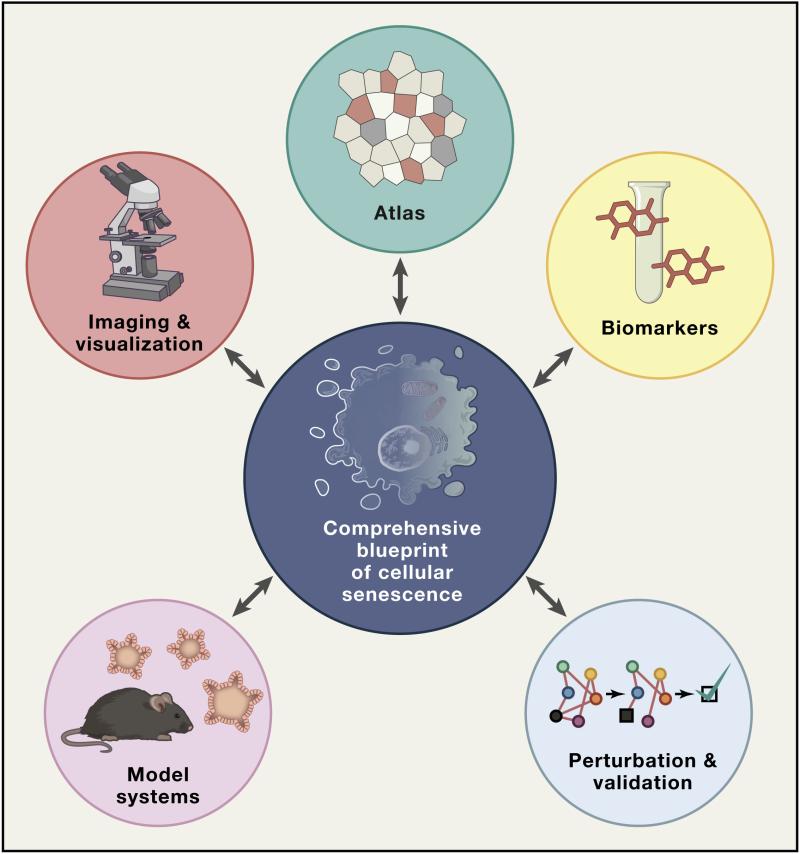Program Snapshot

One cell dividing into two is a hallmark of development in living beings. However, as we age the tissues in our body accumulate a small number of specialized cells that no longer divide. These cells are called senescent cells, and they play important roles in health and disease across the lifespan. Under certain circumstances, such as aging, senescent cells accumulate and release a collection of molecules that can cause damage to nearby tissue. Under other conditions, such as cancer or wound healing, senescent cells can protect health by preventing tumor growth or releasing molecules that promote the growth of new tissue. Biomedical researchers still have many unanswered questions about how, when, why, and where senescent cells form, but their rarity and diversity make them difficult to identify and characterize in the body. Despite this, senescence is an attractive target for new therapeutics, with some already in development. A deeper understanding of cellular senescence will help researchers to develop further therapies that encourage beneficial effects of senescent cells while suppressing their tissue-damaging effects.
The Common Fund’s Cellular Senescence Network (SenNet) Program was established to comprehensively identify and characterize the differences in senescent cells across the body, across various states of human health, and across the lifespan. SenNet will provide publicly accessible atlases of senescent cells, the differences among them, and the molecules they secrete, using data collected from multiple human and model organism tissues. To identify and characterize these rare cells, SenNet will develop innovative tools and technologies that build upon previous advances in single cell analysis, such as those from the Common Fund’s Human Biomolecular Atlas Program and Single Cell Analysis Program. Lastly, SenNet aims to unite cellular senescence researchers by developing common terms and classifications for senescent cells.
SenNet will provide data and resources to the public that would otherwise be difficult to achieve through individual efforts, accelerating the ability of biomedical researchers to develop therapeutics that target cellular senescence and improve human health.
The SenNet Program Initiatives
- Tissue Mapping Centers: These centers will generate high-resolution, high-content, multiscale biomarkers and maps of cellular senescence across the lifespan and physiological states necessary to generate the Atlas of Cellular Senescence. Each center will have four cores including an Administrative Core, Biospecimen Core, Biological Analysis Core, and Data Analysis Core.
- Technology Development and Application Projects: These projects will develop novel analytics and technologies to identify senescent cells in human tissues.
- Consortium Organization and Data Coordinating Center: This center will serve as an organizational hub for the SenNet consortium. It will store, provide access to, and ensure interoperability and sustainability of the data used in the senescent cell atlases.
SenNet Consortium Website
Looking for the latest news and updates from the consortium?



